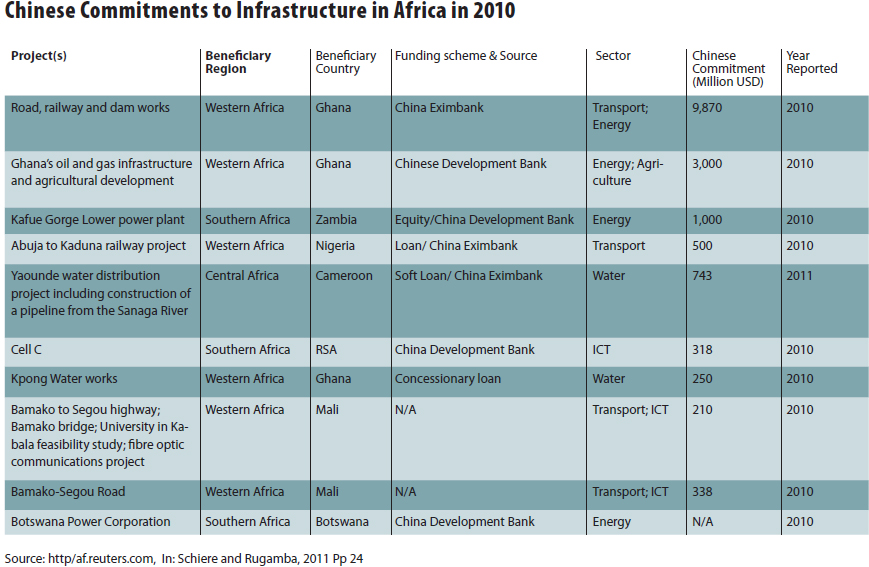|

Historically, the China-Africa relationship is a longstanding one, going back to many centuries. However, there were several centuries of China's disengagement from the world, including Africa. Only with the establishment of the People's Republic of China in 1949 did China take renewed interest in other developing countries, including the African continent.
Since the formation of Forum on China–Africa Cooperation (FOCAC) in 2000, Beijing has waived more than $2 billion in debt to more than 30 African countries and trained more than 10,000 African personnel in both civilian and security sectors. It granted zero tariff rates for 190 products exported to China from Sub-Saharan Africa, engaged in peacekeeping operations in the Democratic Republic of the Congo, Liberia and has also supported the African Union's peacekeeping mission in Sudan.
Thus the impact of China in Africa will not only depend on the indigenous commodities of each country, but also added value in manufacturing as many textile producers are already shifting from China to Africa, and there is considerable potential to relocate the whole range of consumer durables, automobile, transport manufactures and electronics to Africa. Therefore, Africa's desire to diversify its exports could fit well with China's goals of structural transformation.
Similarly, China-Africa Development Fund (CADF) is supporting business partnerships between Chinese and African entrepreneurs, has participated in 20 projects and invested over $500 million of its own resources while promoting investment of more than $20 billion by Chinese companies. Sinosteel Corp., China National Building Material, Hainan Airlines, the Industrial and Commercial Bank of China, China Construction Bank (China's largest lending institution), China Development Bank and China Eximbank are the few among Chinese companies actively participating in Africa's development agenda.
Material world
Africa is hardly the most important trading partner for China: in 2008, Africa ranked seventh as an export destination and eighth as a source of imports. In 2008 China's total exports to Africa equaled $50.9 billion versus $55.9 billion in imports from Africa. Of all natural resources that capture China's interest in Africa, the most important is oil.
China rivals the United States for Angola's oil, controls most of the Sudan's oil, and is exploring energetically for oil onshore, and offshore. It is the major purchaser of timber from West Africa. About 40 percent of Africa's total exports to Asia are to China, and about 30 percent of Asia's total exports to Africa are from China. China imports timber from Gabon, the Democratic Republic of the Congo, Equatorial Guinea, Cameroon and Liberia; cotton from Benin, Burkina Faso, Mali, Cote D'Ivoire and Cameroon; copper from Zambia and the Democratic Republic of the Congo; ferrochrome and platinum from Zimbabwe; diamonds from South Africa; and tin and tantalum from the Democratic Republic of the Congo. To the above named countries, China supplies electronic goods, machinery, motorcycle, clothing, footwear and a host of additional low-value consumer items. China's share of Africa's total trade is rising and it may soon eclipse America and European annual totals.
|